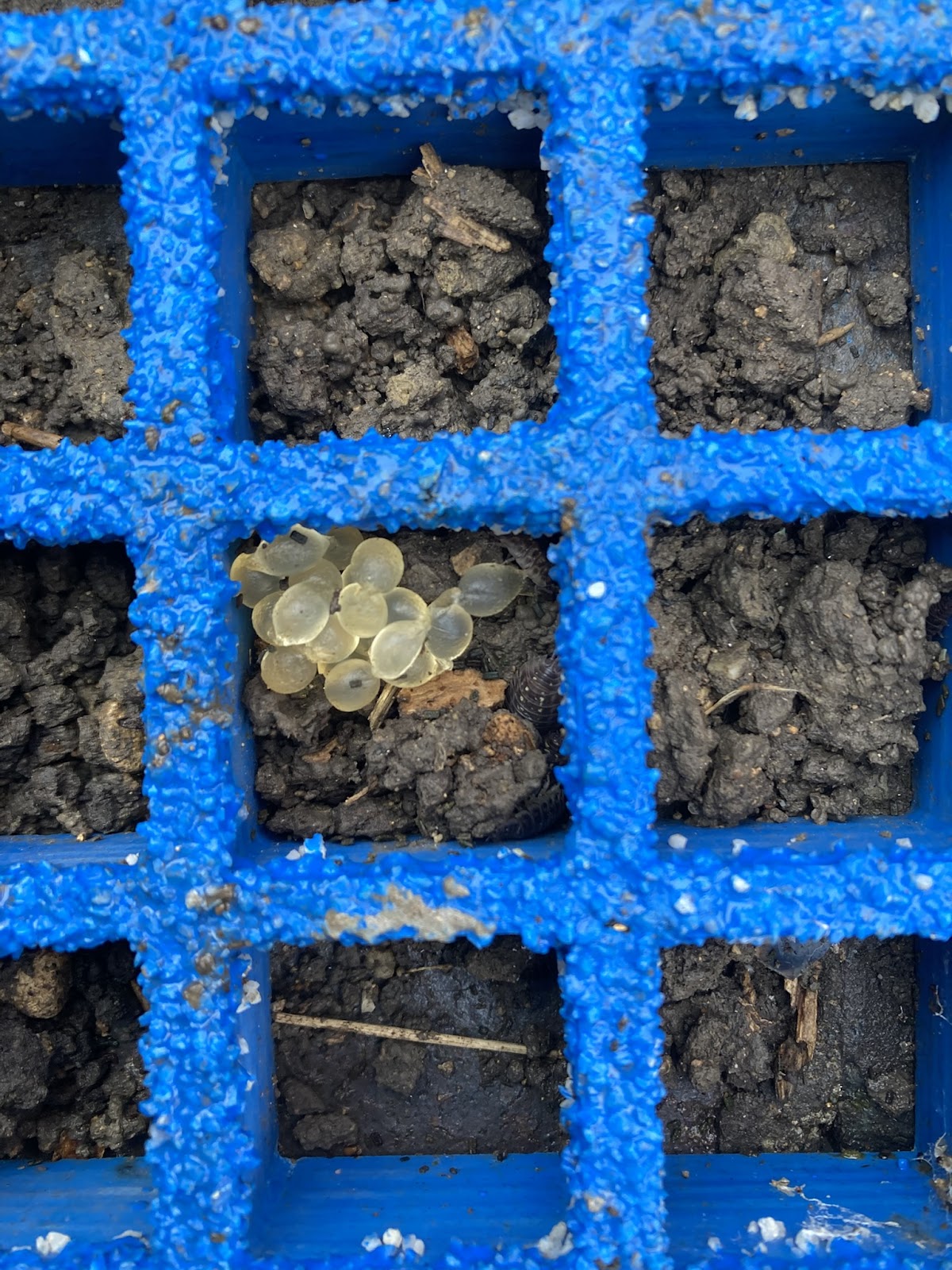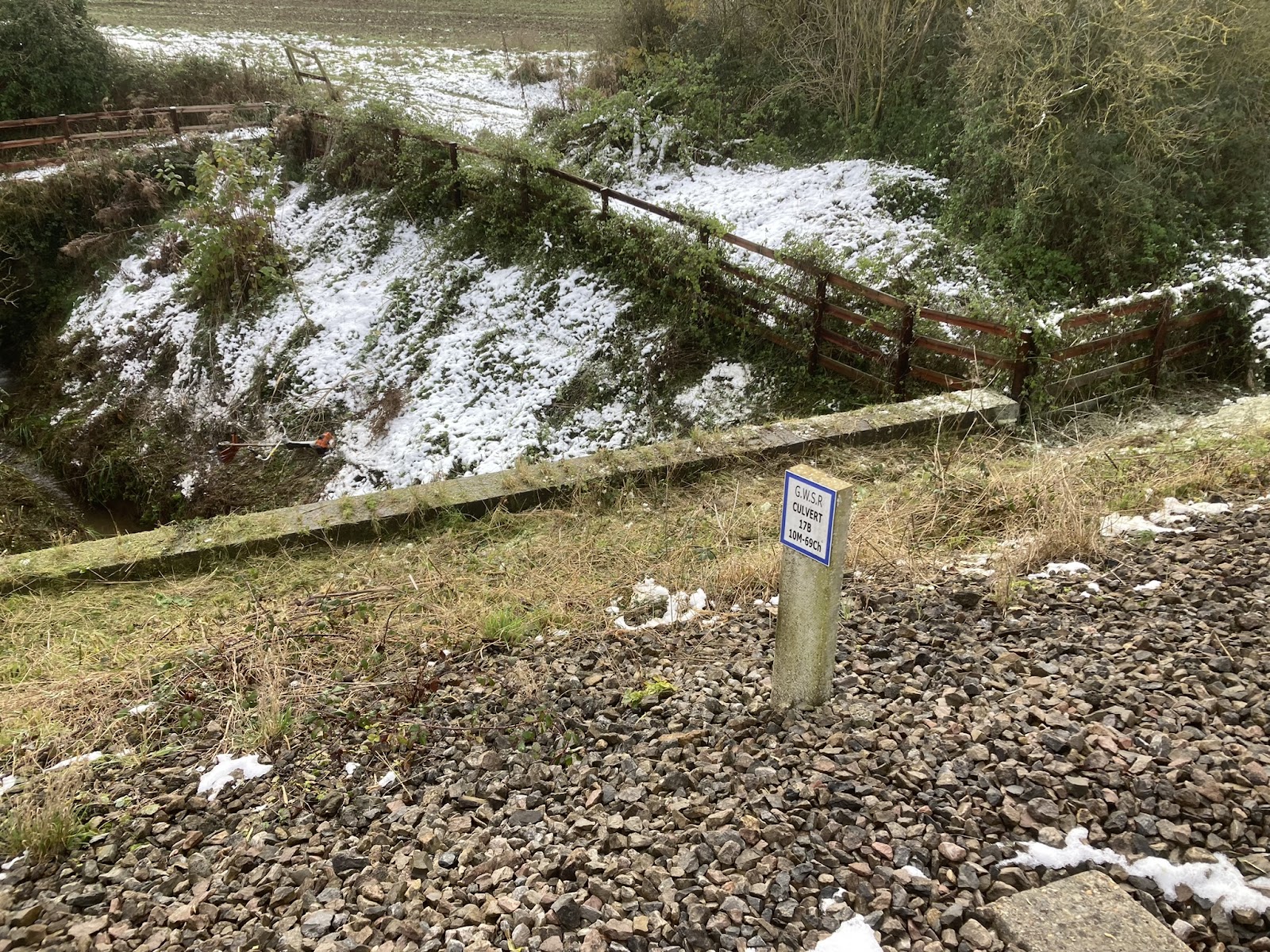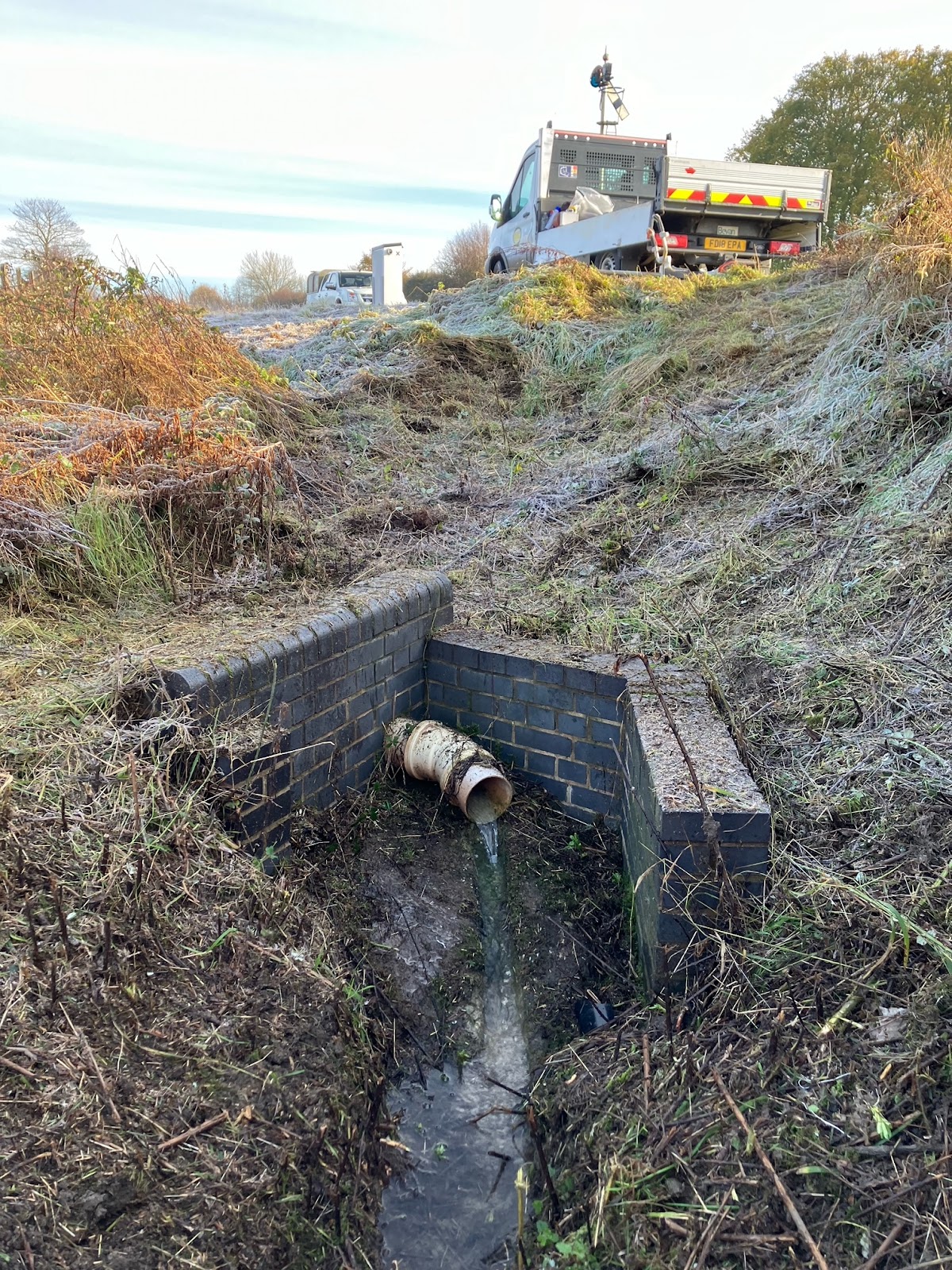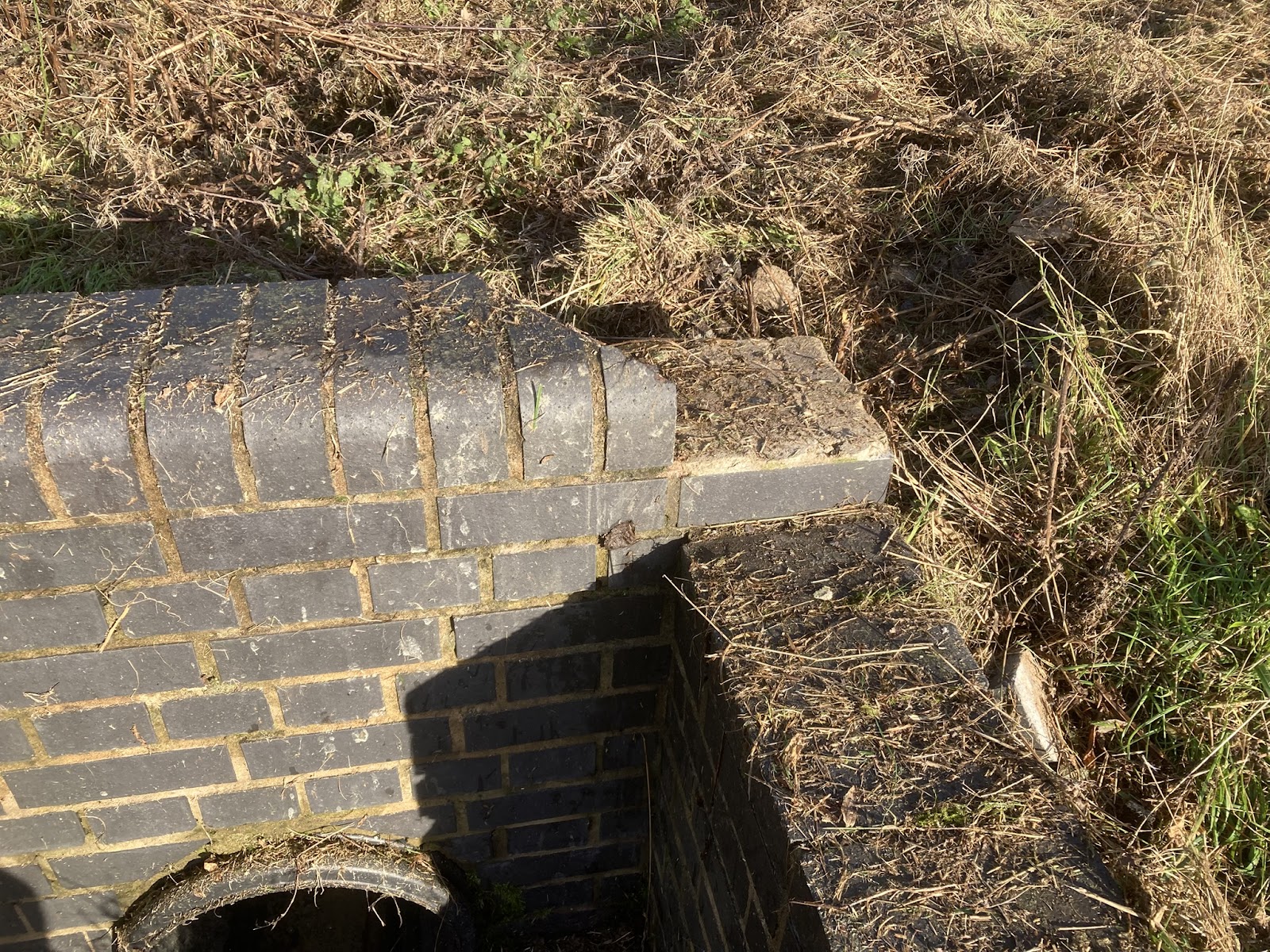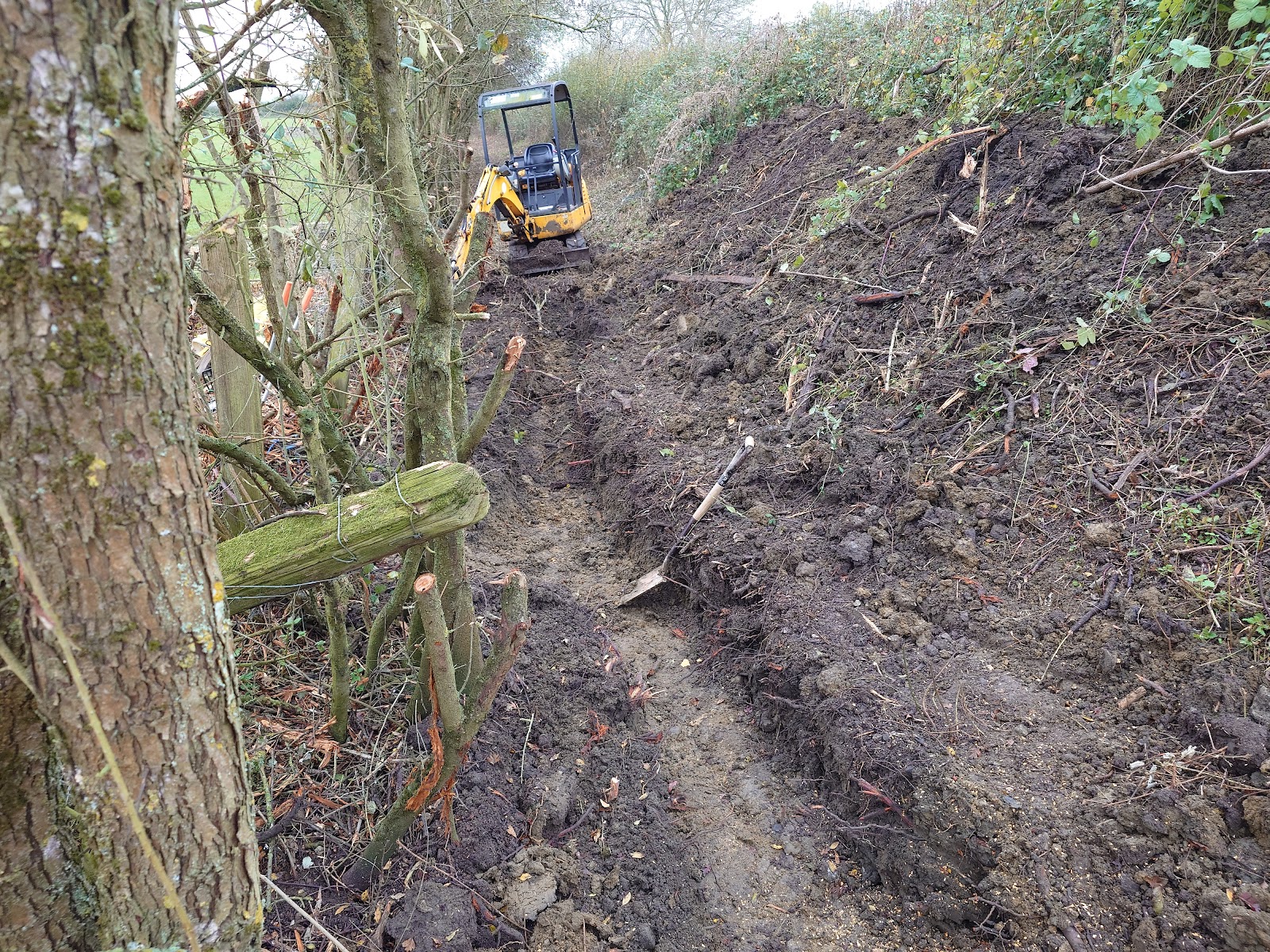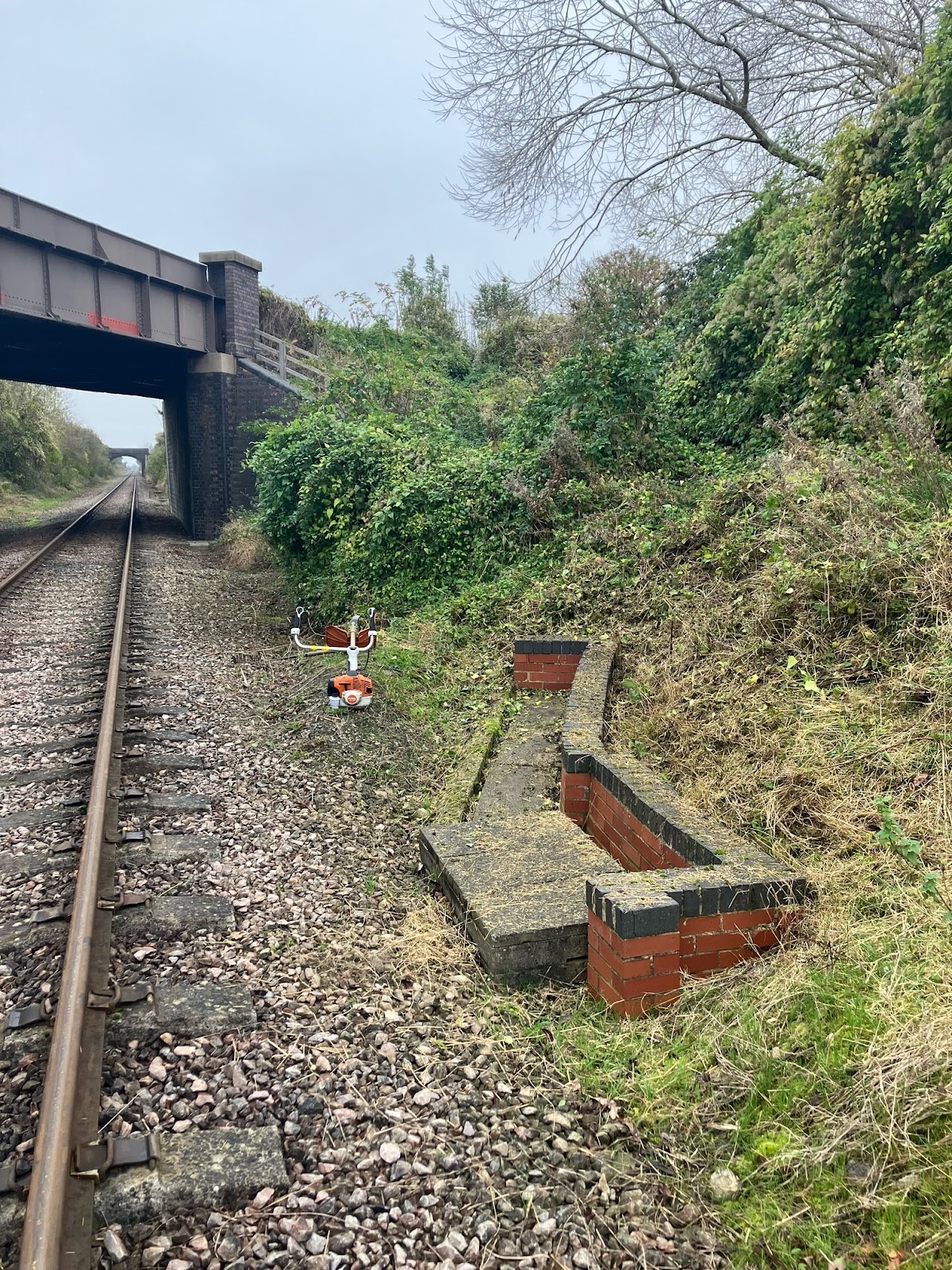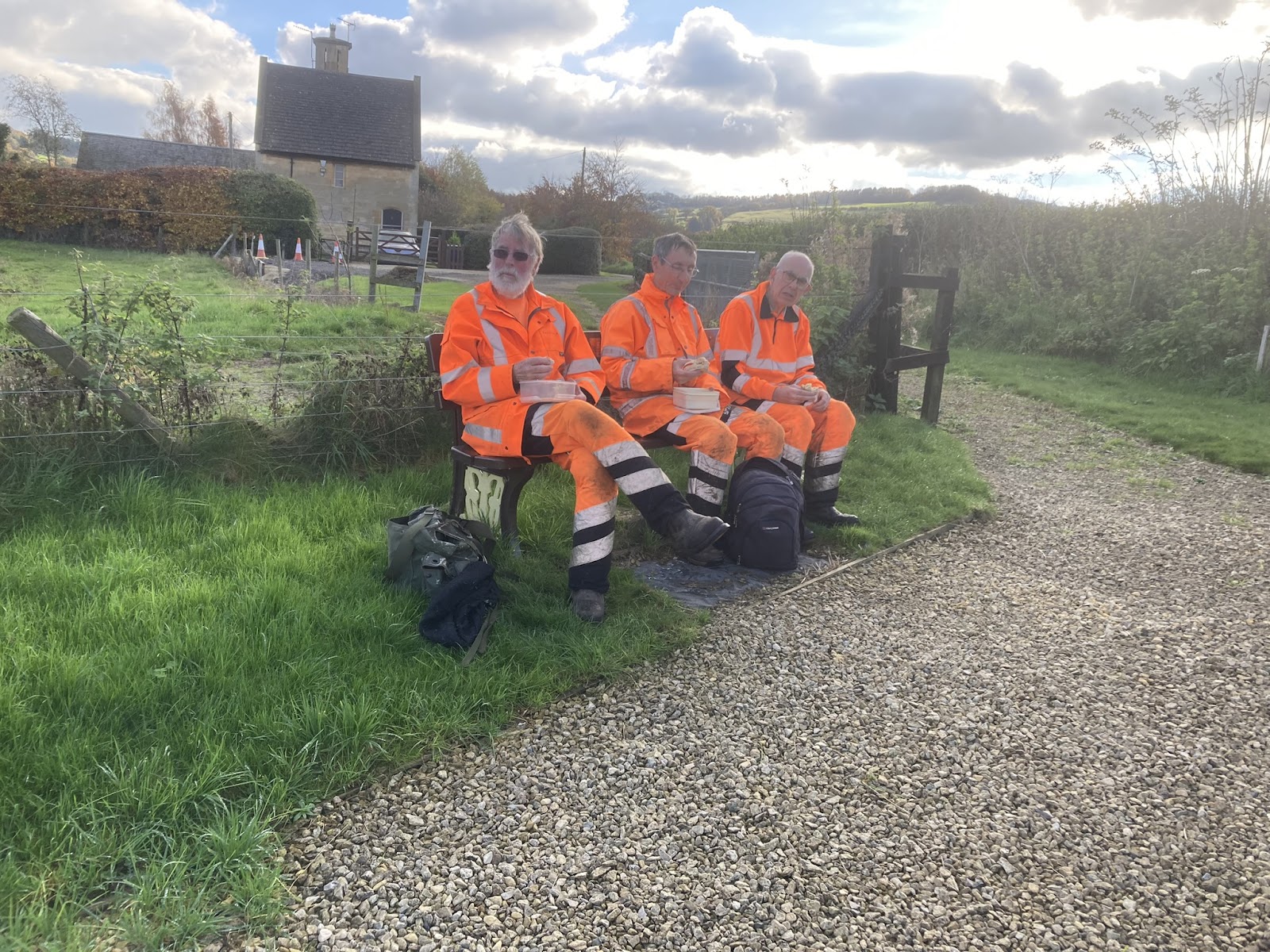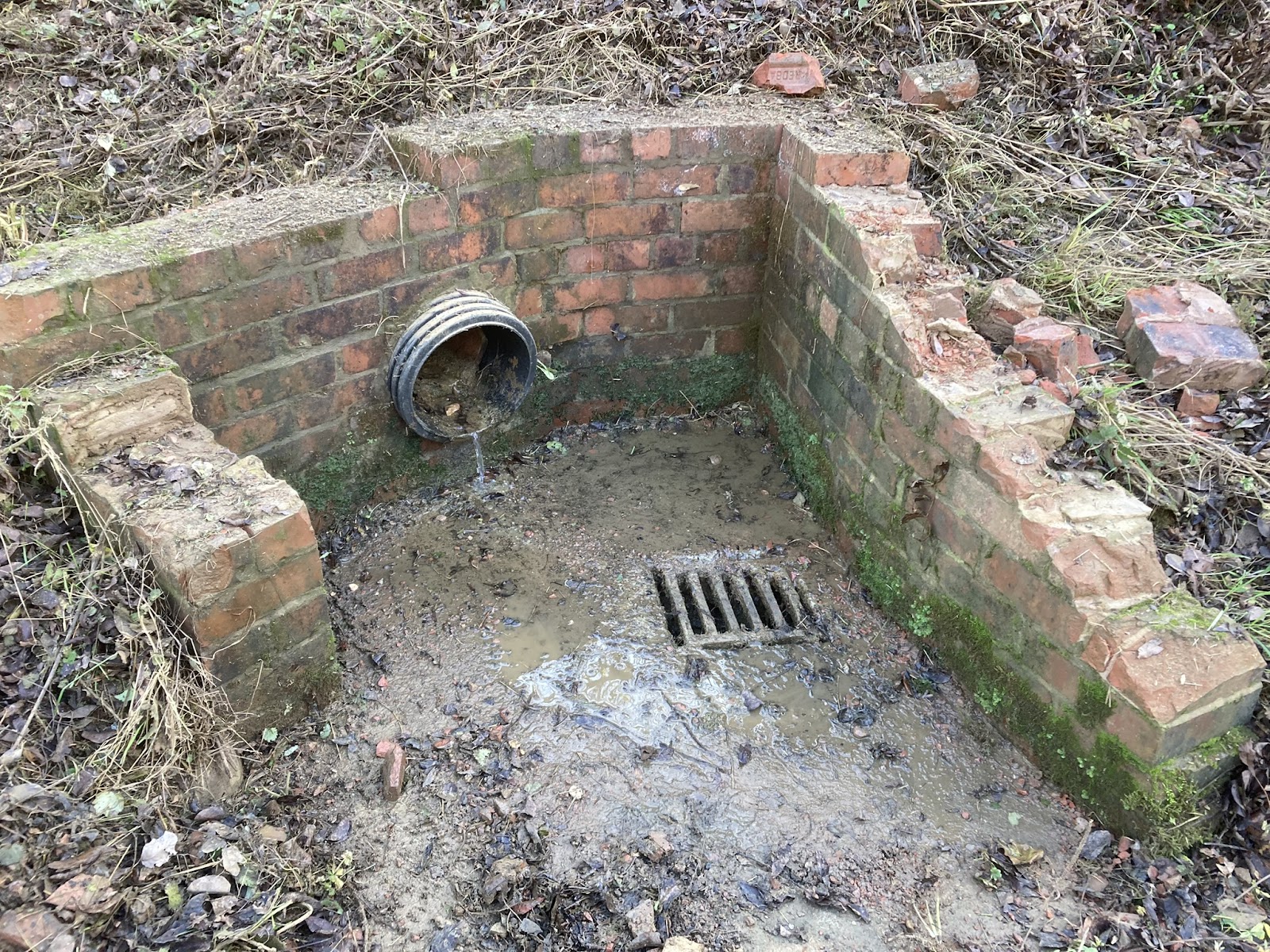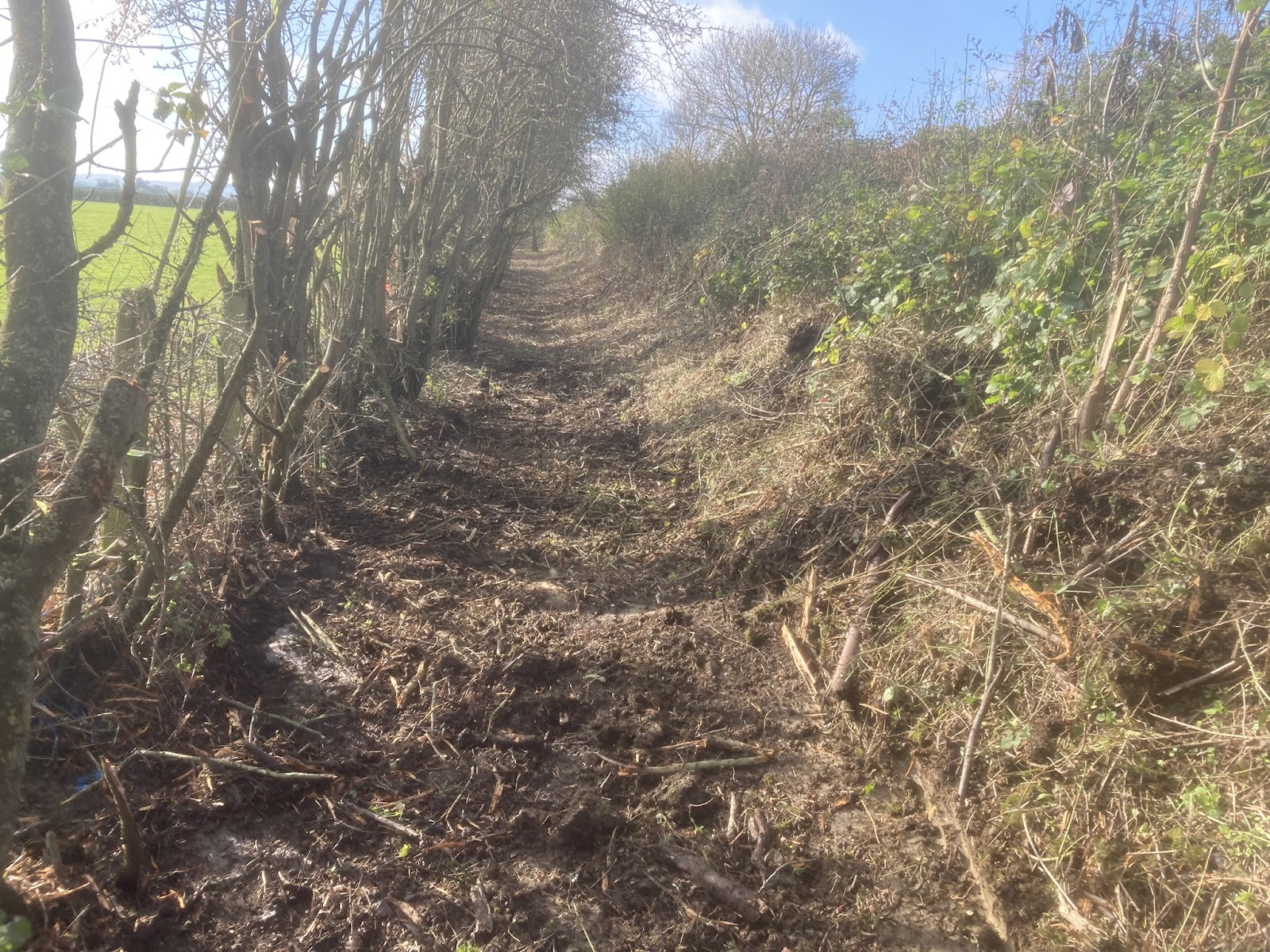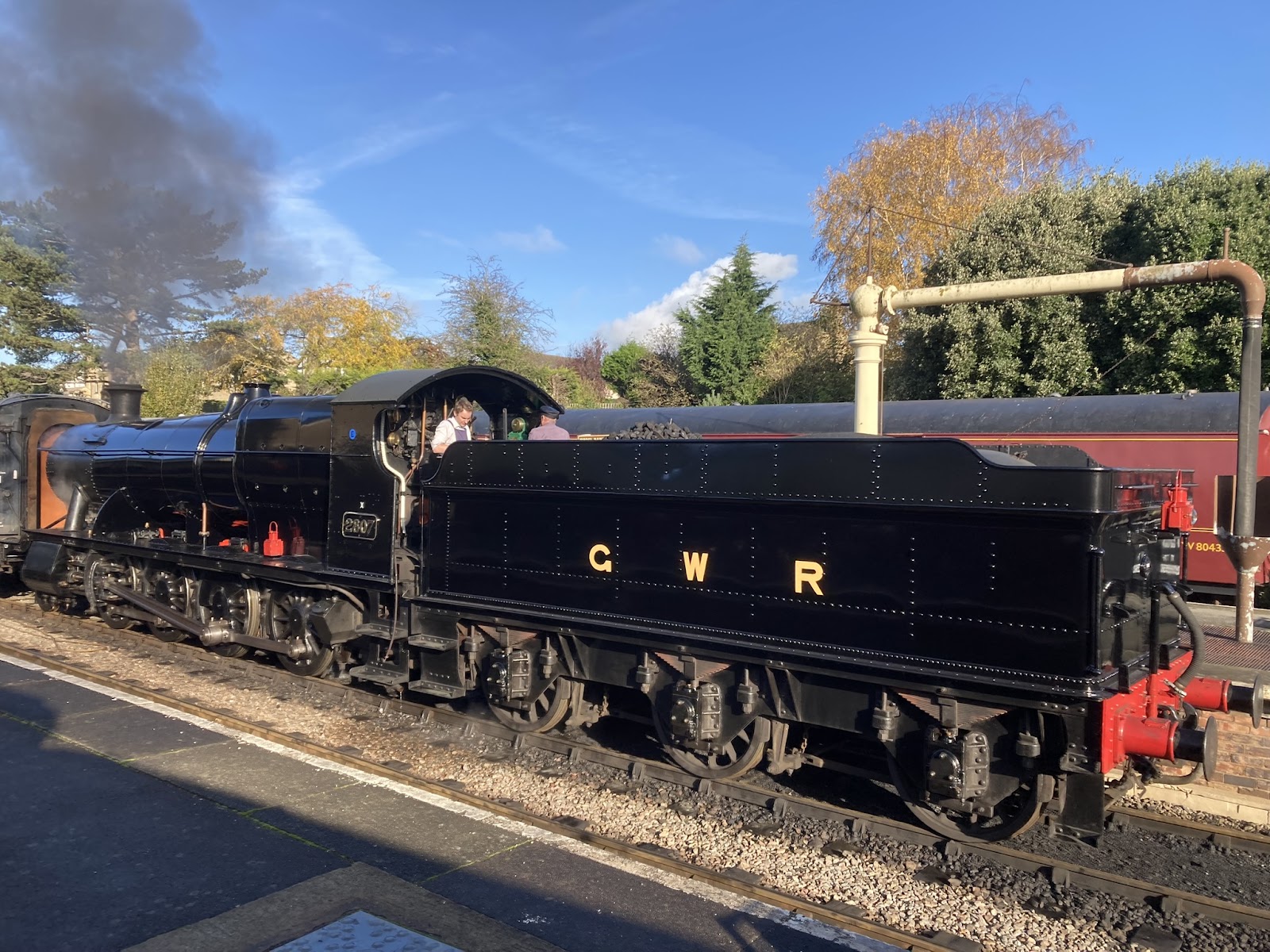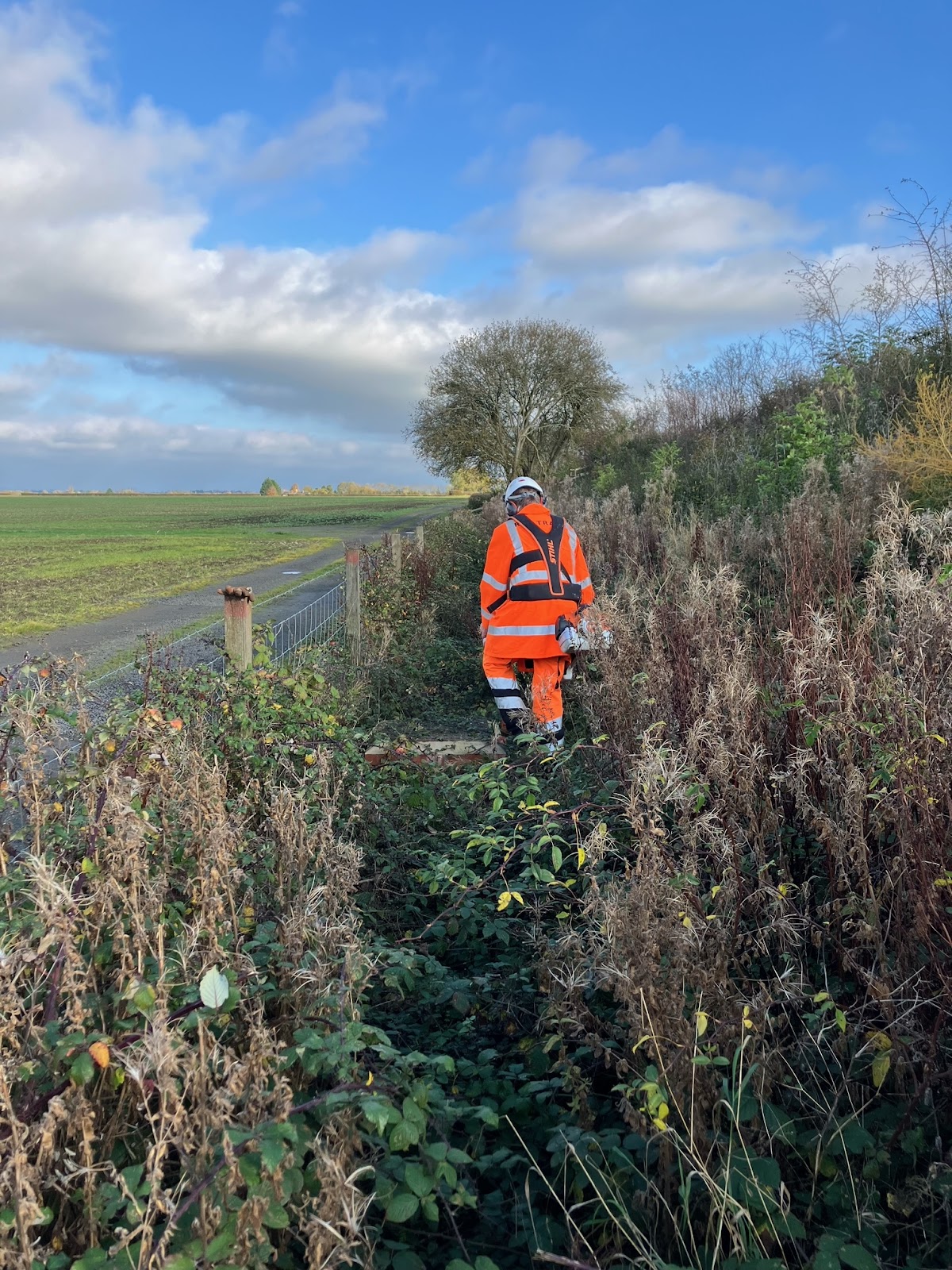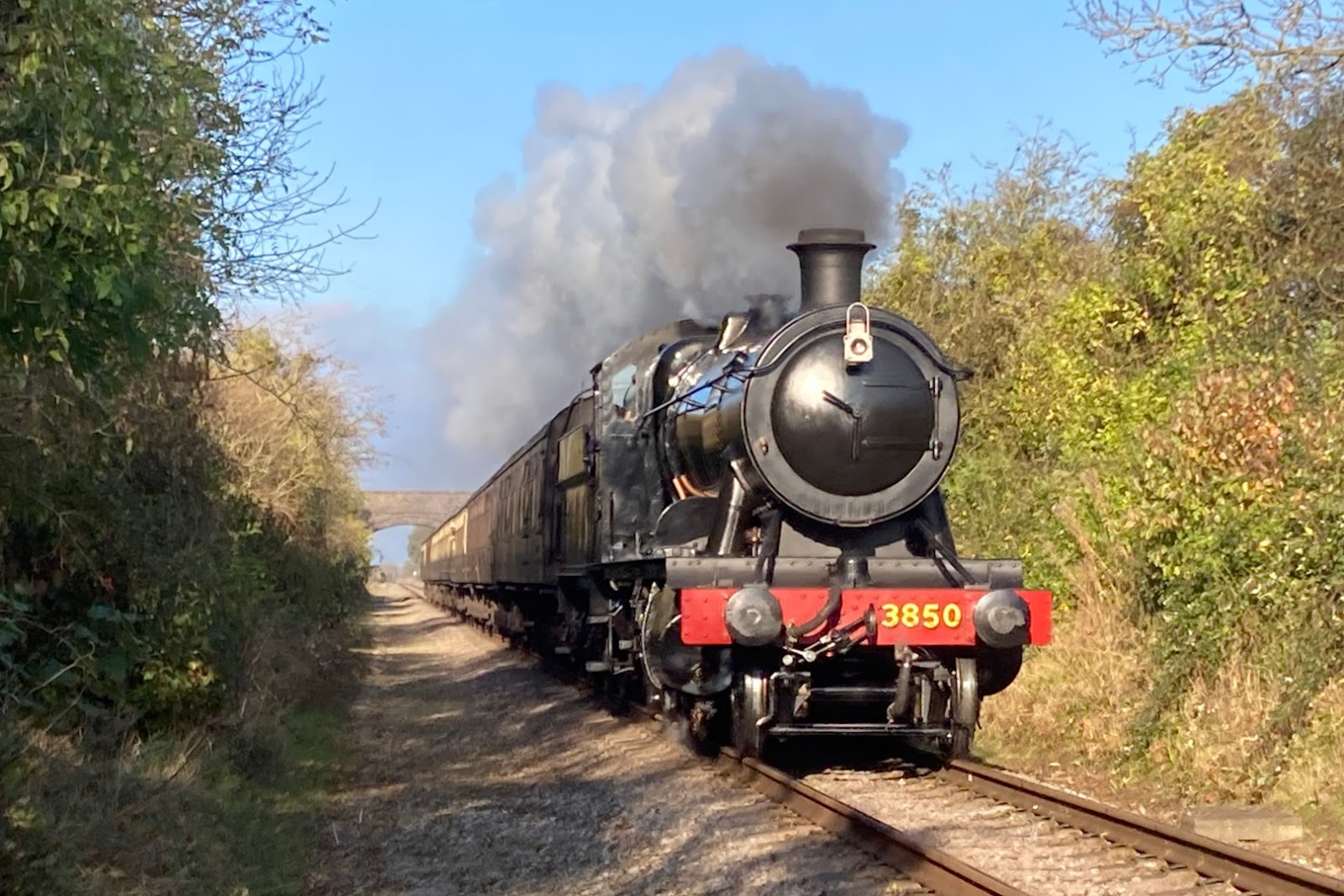As the Drainage team takes a well earned day off
between Christmas and New Year, the Thursday before Christmas was our
last working day of the year. Whilst reaching the end of the calendar
year, we have not yet reached the south end of the line with our
annual programme of visual inspections and clearance of culverts and
cross drains. However, 31st January is our deadline for
that. That corresponds to the Railway’s financial year and also
with the start of the bird nesting season when clearing operations
are legally more restrictive. Hence our first task for 2025 will be
completion of the inspection & clearance programme, covering
Stanley Pontlarge to Gotherington Yard and the two watercourses on
the disused section south of Hunting Butts tunnel. (Oh - and one near Gretton which we have cleared but are still waiting for the water level to drop to undertake an inspection).
Thursday 5th December
Another double digit day – but not
for attendance. It was the number of cross drains and culverts that
the team cleared that reached 10. Mind you the team attendance was
almost in double figures, with nine present. Hence starting at
Gotherington Signal Box, we were able to clear 35A, 35B, 35C, 35D,
36A, 36B, 37A, 37B, 37C and 37D; the last one is just south of the
foot crossing for the Woodmancote to Gotherington footpath. Several
factors contributed to this achievement:
1. The large size of
the team
2. Simultaneous use of five brush cutters with shredder
blades
3. A much reduced need to clear access points on the down
(Cotswold) side embankment following visits by the vegetation
contractor with his robo flail and the Clearance teams.
 |
| The down (Cotswold) side toe ditch between 35C and 35D - cleared and accessible. |
We also inspected and cleared some small debris from the road gulleys under Manor Lane bridge. The only water on the road was run off from an adjoining field. No sign of any backing up of cross drain 36A which in the past has been the cause of flooding on Manor Lane. We have received a message of thanks from the leader of Gotherington Parish Council regarding the work we have done there which so far this this winter has prevented major flooding.
 |
| Success - water flowing through not backing up in the inlet chamber of 36A by Manor Lane bridge... |
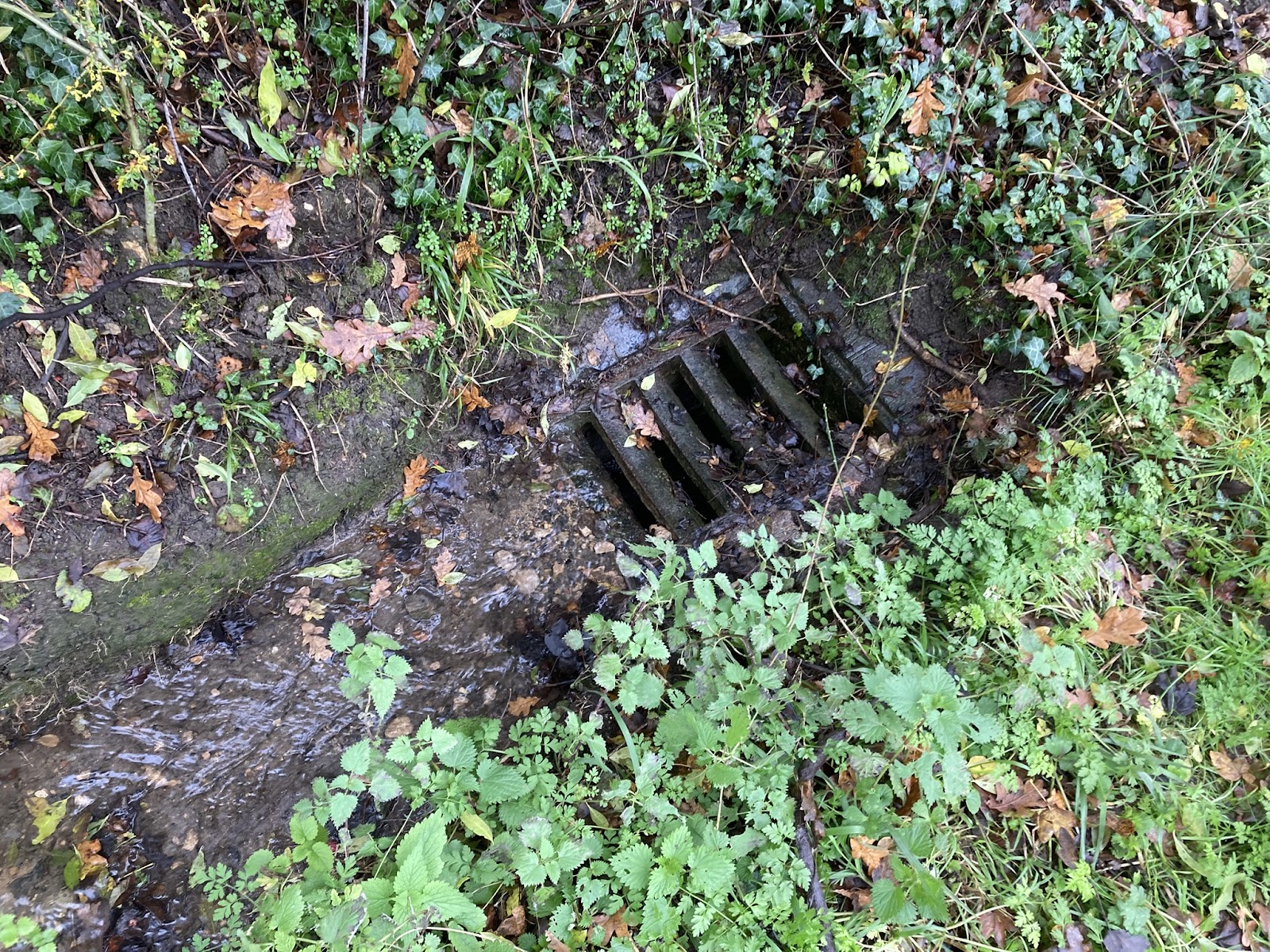 |
| ... and flowing freely into the upstream road side gulley .... |
 |
| ... leaving Manor Lane under the bridge just damp, not flooded. |
We completed the internal visual inspection of the first six of the cleared culverts/cross drains. For the record the nine team members were (alphabetically) Andrew, Dave, John, Jonathan, Martin, Nigel, Peter, Roger and Stuart. Exactly who cleared what was impossible to track. The other achievement was finishing before the strong winds and rain set in mid afternoon.
Wildlife report:
Another
low flying kestrel – at one point it was perched on the
Gotherington up distant signal as we were underneath. Plenty of
mistletoe, but fewer berries than last year and most still have a
green tinge. Underneath one concrete chamber lid we came across some slug eggs. Blue mesh lids obviously make a good hatchery for slugs.
Interesting fungi on a tree stump by the inlet of 35C.
Thursday 12th December
Only 54.5% attendance this week, which means 6 of the team. A couple of years ago that would equate to 100%.
However we completed the planned tasks of clearing and inspecting all the cross drains and culverts between accommodation bridge 37 (south of Manor Lane, Gotherington) and Pecked Lane crossing at Bishops Cleeve. Additionally we cleared the access to the syphon covers on the embankment crests of cross drain 39B on the low mileage side of Two Hedges Road bridge.
Jonathan and Polly took the clearance of culvert 38A; first the up outlet side which is in the playing field off Millham Road; then the down inlet side beside the mobile homes in Willow Drive. Nigel, Ian and Martin undertook the clearance of cross drains 37E, 37F and 37G - including about half of the outlet ditch of 37G that runs beside the mobile homes in Willow Drive down to the inlet of 38A. Andrew followed up with the inspections of 37A, 37B, 37C, 37D, 37E, 37F, 37G and 38A.
 |
| A garden extension covers the original outlet of 38A on the up (Malvern) side; the ditch then runs alongside the playing field off Millham Road. [Photo by Jonathan] |
 |
| The bore of 38A just inside the inlet. [Photo by Jonathan] |
Then after lunch the whole team cleared 39A at Pecked Lane - including the debris that had accumulated where the outlet splits into two pipes under the footpath just out side the current railway boundary.
The outlet of 39A at Pecked Lane crossing splits into two pipes under the footpath by the railway boundary. The final exit of 39B by the front garden of a house in Pecked Lane. [Photo by Jonathan]
Weather wise this was a very damp murky misty day - almost fog at one point. It was not possible to see one end from the other on the long straight between Manor Lane and Station Road.
Wildlife report: An unidentified species of deer near 37E, several inquisitive robins; blackbirds and mistle thrush in the hedges. Finally a young fox near Pecked Lane crossing - unfortunately dead and very stiff. Lots of Viscum album (European mistletoe) on several trees - but not much with white berries and most just to high to reach. We did manage to harvest a few sprigs.
 |
Mistletoe and mist at milepost 16½. |
Ten of the team attending for our last working day of the year. The main task was to progress the programme of culvert and cross drain visual inspections and clearance. Ancillary tasks were clearing around the cess chambers (accomplished down to mile post 18 south of Kayte Lane) and clearing some of the items of rubbish from the embankment immediately south of Two Hedges Road. Some of our neighbours in Bishops Cleeve seem to regard the railway as a waste tip. The ball recovery count was three footballs, one golf ball and one table tennis ball. Other items were a plastic dustbin lid and parts of a plastic wheel arch for a Land Rover.
 |
| Opening the manhole on one of the inlets of syphon 39B by Two Hedges Road was a lot easier this time - a temperature +5C rather than -8C, so it was not frozen solid. |
The subjects of the clearing and inspections were Syphon cross drains 39B and 40A, cross drains 40B, 41A, 41B and the syphon cross drain 41C at Kayte Lane. Whilst cross drains are smaller than culverts (in terms of the diameter of the under track bore); some of them take longer to clear and inspect than the culverts. 40B is a good example – it has a down (Cotswold) side stream entry, a crest ditch with a connection to the down side cess; then where the cutting becomes an embankment the cess drain enters the ditch with a small headwall and the ditch continues down to the main inlet headwall where another smaller stream enters. The up (Malvern) side is less complicated; the up side cess is piped under the gardens of the last few adjoining houses, then emerges into a ditch to run down to the main exit. The main inlet is from streams running down from Cleeve Hill (and a couple of springs). These carry a lot of water during and just after storms. So, not surprisingly, we found that Storms Bert and Darragh had left their mark. We cleared away silt and mud from a down cess chamber by the inlet of 40B; which allowed the trickle of water overflowing from the crest to enter the cess and drain away. One of our contractors started an improvement scheme here in January 2020 – due to the effects of the COVID-19 pandemic this was not fully completed. With the increased frequency of heavy storms, sorting out the issues here will become one of our priority tasks for next year. (Amongst several others!)
 |
| Storms Bert and Darragh buried a down side cess chamber. |
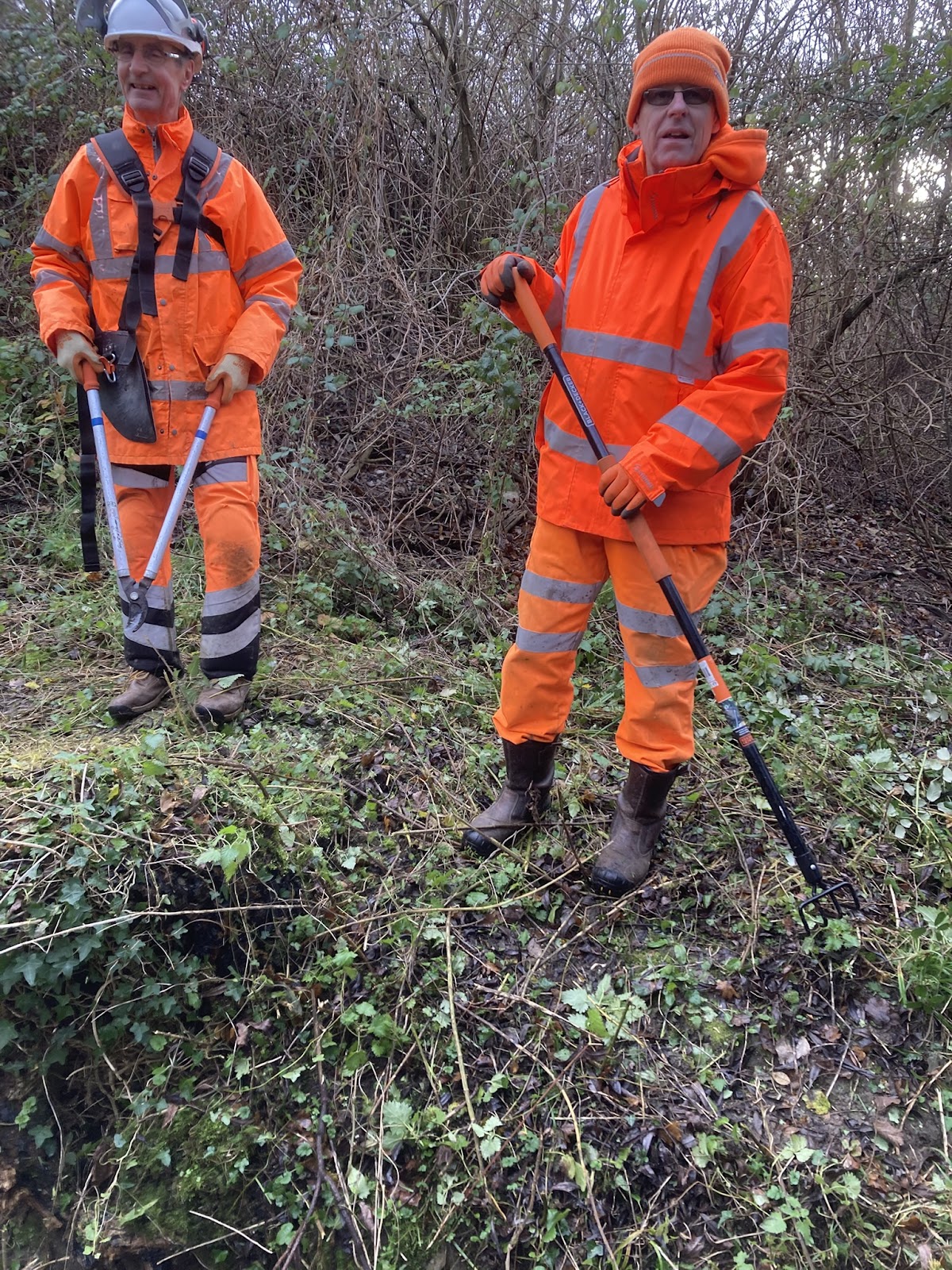 |
| Jonathan (right) putting one of our new long handled three prong kebs to use, whilst Dave waits to lop more branches with the loppers. |
 |
| Stuart ponders the problem of how to drain the up side at 41A - there is no outlet across the playing field. However, for most of the the year this is bone dry. |
Wildlife report: Nothing particularly special in terms of birdlife – however the absence of leaves on the hedges and trees makes spotting the birds easier. It does not make identification easier for us non-ornithologists, but we did identify long tail and great tits from other LBJs (Little Brown Jobs). Not quite wild were the chickens and cockerels on the small holding on the down side near milepost 17½. No sightings of mammals, but we spotted evidence of badgers. We removed straw and grass from the outlet chamber of cross drain 41B which had obviously been a badger home during the drier months. More worryingly was an active badger hole in the vacant track bed (up side rail length 18 of mile post 17½).
 |
| Danger - badger work! |
 |
| Better quality mistletoe from Bishops Cleeve. |
Finally
On behalf of all the Drainage Team, I send compliments of the season to all our readers and supporters. Happy New Year to you all – and hopefully it will be a drier one!
